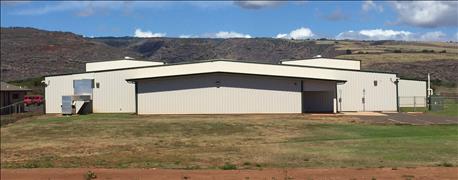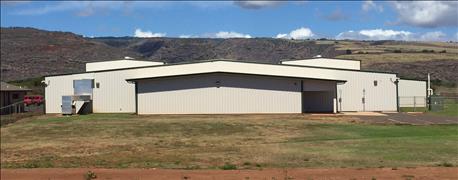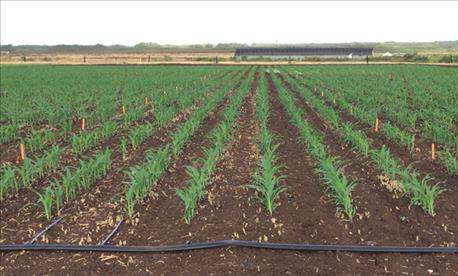
Beck’s is the first regional seed company to announce it would set up a winter corn breeding program in Hawaii. On Oct. 3, Beck’s purchased a 13,000-square-foot facility previously owned by a company that discontinued its breeding program
Beck’s joins national players that already have facilities in Hawaii. They include Syngenta, DuPont Pioneer, Dow AgroSciences and Monsanto.
Why do companies make this investment? Here is Indiana Prairie Farmer's interview with Kevin Cavanaugh, Beck’s director of research, to explain one company’s motivation for establishing a winter nursery site in Hawaii.

ALREADY ROLLING! Beck’s purchased this facility in Hawaii in time to conduct research work there this winter. (Photos courtesy of Kevin Cavanaugh, Beck’s.)
IPF: Where is the facility located, and what makes that area so attractive for winter nurseries?
Cavanaugh: We’re located on Kauai. The facility is actually located on the south and west side of the island, which is the flat side. Annual rainfall is only 13.9 inches per year.
The kicker is that in the mountains there, annual rainfall is 453 inches. It’s one of the wettest spots in the world. Reservoirs have been built to hold water coming down from the mountains. There is plenty of water for irrigation, usually with a drip tape system.
IPF: Where was your winter research before?
Cavanaugh: Much of it was in South America. We moved a significant amount of it to Hawaii immediately. We made the purchase just in time for the fall planting season. We still have some work done at nurseries in South America.
IPF: What was the motivation to purchase this facility and develop your own winter nursery program?

UP AND GROWING: This corn was planted in Beck’s winter nursery in Hawaii in early fall. (Photo courtesy of Kevin Cavanaugh, Beck’s.)
Cavanaugh: It allows us to better control our own destiny looking to the future. And while it’s still an expensive part of conducting research, we believe we can do it more economically than when we shipped it for others to grow in South America.
We don’t actually own the land under the buildings. No one there does. The land is owned by the state of Hawaii, and leased to us. We also lease about 1,000 acres near our facility. There also tends to be fewer challenges in Hawaii than in South America, especially in respect to diseases.
IPF: What types of things can you accomplish in the winter nursery?
Cavanaugh: We have breeding efforts to develop new inbreds going on there. We also can do parent seed increases there. The seed then comes back to the U.S. for our spring growing season.
We also intend to begin doing the initial steps of inserting traits into our hybrids in the winter nursery. Currently we do trait insertion in our greenhouses in Atlanta, Ind. We will still utilize our greenhouses. Starting the process there will mean we don’t have to build more greenhouses here as we expand our programs.
IPF: How were you able to gear up so quickly and get seed in the ground in October?
Cavanaugh: We purchased the equipment needed to run the nursery along with the facility. It’s very expensive to transport tractors and other equipment from the U.S. mainland to Hawaii, so we will work with what was there. We also hired seven employees who worked for the previous company. They are now key players in helping us develop our winter nursery program there.
About the Author(s)
You May Also Like




